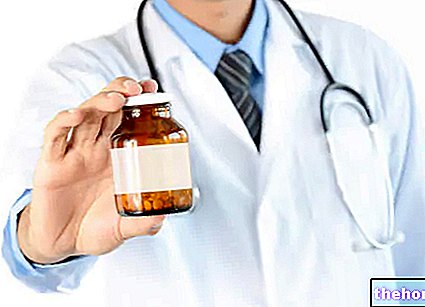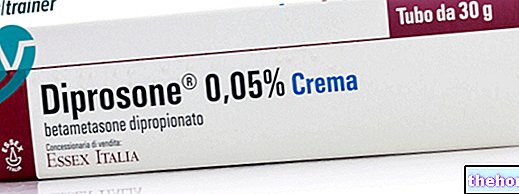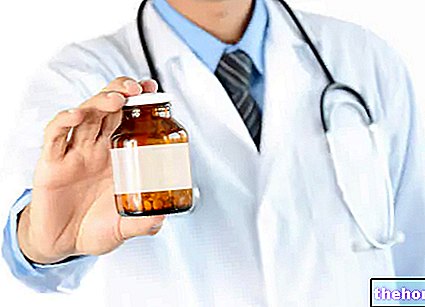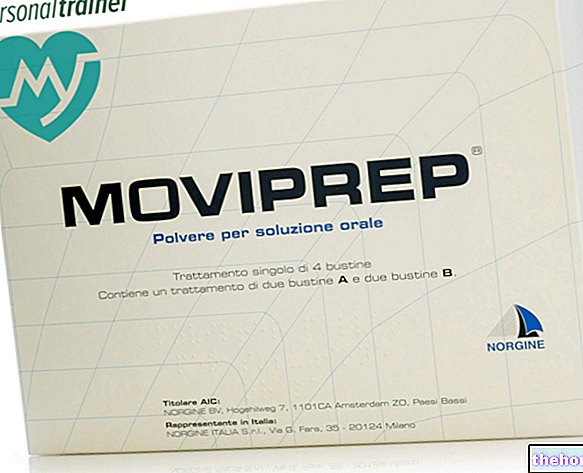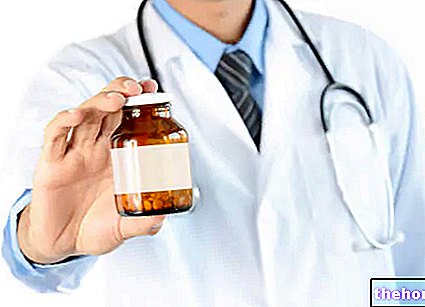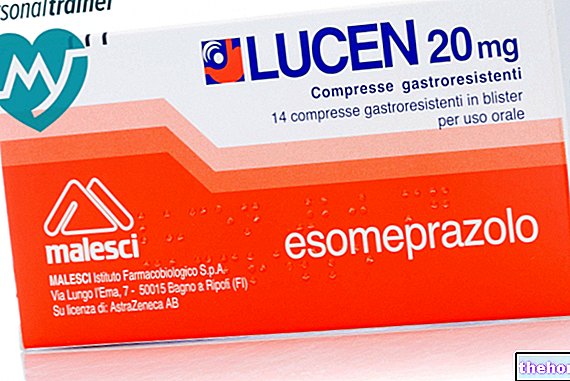Active ingredients: Dequalinium chloride
Dequadin 0.25 mg tablets
Dequadin package inserts are available for pack sizes:- Dequadin 0.25 mg tablets
- Dequadin 0.5% oral mucosal solution, Dequadin 0.5% oral mucosal spray
Indications Why is Dequadin used? What is it for?
Dequadin contains the active ingredient dequalinium chloride (also called decamethylene bis aminoquinaldine chloride), and is a broad spectrum antibacterial and antifungal (antifungal) drug. It is active against Gram positive and Gram negative bacteria, on Borrelia vincenti, Candida albicans and some species of Tricophyton. Dequadin is used in the topical (local) treatment of angina (inflammation of the pharynx and / or tonsils), stomatitis (inflammation of the mouth), pharyngitis (inflammation of the pharynx) and tonsillitis (inflammation of the tonsils).
After dental extractions Dequadin is useful in the prevention of infections.
Contraindications When Dequadin should not be used
Do not take Dequadin
- if you are allergic to dequalinium chloride or any of the other ingredients of this medicine (listed in section 6);
- if you are using other antiseptics or cleansers for oral hygiene;
- in the case of children under the age of three, especially if they are predisposed to laryngospasm (spasmodic contraction of the muscles of the larynx) or to convulsions (involuntary contractions of the muscles).
Precautions for use What you need to know before taking Dequadin
Talk to your doctor or pharmacist before taking Dequadin.
The use of Dequadin, especially if prolonged, can give rise to phenomena of sensitization to the drug or resistance to microorganisms. If this occurs, stop the treatment and contact your doctor. Contact your doctor if you do not notice any improvement or if this occurs. notice worsening of symptoms.
Children
Dequadin should not be used in children under 3 years of age, especially if they are predisposed to laryngospasm (spasmodic contraction of the muscles of the larynx) or to convulsions (involuntary contraction of the muscles).
Interactions Which drugs or foods may change the effect of Dequadin
Tell your doctor or pharmacist if you are taking, have recently taken or might take any other medicines.
In particular, tell your doctor or pharmacist if you are taking any other antiseptics or cleansers for oral hygiene.
Dequadin with food and drink
Dequadin can be safely taken by people with celiac disease.
Warnings It is important to know that:
Pregnancy and breastfeeding
If you are pregnant or breast-feeding, think you may be pregnant or are planning to have a baby, ask your doctor or pharmacist for advice before taking this medicine.
Driving and using machines
There are no known effects on the ability to drive or use machines.
Dequadin contains sucrose and glucose.
If you have been told by your doctor that you have an intolerance to some sugars, contact your doctor before taking this medicinal product. Dequadin can be harmful to the teeth.
Dose, Method and Time of Administration How to use Dequadin: Posology
Always take this medicine exactly as described in this leaflet or as directed by your doctor or pharmacist. If in doubt, consult your doctor or pharmacist.
Adults:
The recommended dose is 1 tablet to be dissolved slowly in the mouth every 2 to 3 hours during the initial phase of treatment. Subsequently, the interval between one tablet and the next can be increased.
Children over 3 years of age:
The recommended dose is 3 or 4 tablets per day.
Do not exceed the recommended doses without your doctor's advice.
Use only for short periods of treatment.
Method of administration:
Dissolve the tablet in your mouth slowly.
If you forget to take Dequadin
Do not take a double dose to make up for a forgotten tablet.
If you stop taking Dequadin
If you have any further questions on the use of this medicine, ask your doctor or pharmacist.
Overdose What to do if you have taken too much Dequadin
In case of accidental ingestion of an overdose of Dequadin, please inform your doctor.
Side Effects What are the side effects of Dequadin
Like all medicines, this medicine can cause side effects, although not everybody gets them.
Local irritation may occur during treatment with Dequadin.
Reporting of side effects
If you get any side effects, talk to your doctor or pharmacist. This includes any possible side effects not listed in this leaflet. You can also report side effects directly via the national reporting system at http://www.agenziafarmaco.gov.it/it/responsabili. By reporting side effects you can help provide more information on the safety of this medicine.
Expiry and Retention
Keep this medicine out of the sight and reach of children.
Do not store above 30 ° C.
Do not store below 8 ° C.
Store in the original package to protect from moisture.
Do not use this medicine after the expiry date which is stated on the carton. The expiry date refers to the last day of that month.
Do not throw any medicines via wastewater or household waste. Ask your pharmacist how to throw away medicines you no longer use. This will help protect the environment.
Deadline "> Other information
What Dequadin contains
- The active ingredient is dequalinium chloride (also called decamethylene bis aminoquinaldine chloride);
- The other ingredients are sucrose, citric acid monohydrate, gelatin, glucose, magnesium stearate, mint essence and lime flavor.
Description of what Dequadin looks like and contents of the pack
Dequadin comes in the form of tablets for oral use, contained in blisters of 10 tablets. Pack of 20 tablets.
Source Package Leaflet: AIFA (Italian Medicines Agency). Content published in January 2016. The information present may not be up-to-date.
To have access to the most up-to-date version, it is advisable to access the AIFA (Italian Medicines Agency) website. Disclaimer and useful information.
01.0 NAME OF THE MEDICINAL PRODUCT -
DEQUADIN
02.0 QUALITATIVE AND QUANTITATIVE COMPOSITION -
DEQUADIN 0.25 mg tablets
Each tablet contains:
Active ingredient: dequalinium chloride 0.25 mg.
Excipients: sucrose, glucose.
DEQUADIN 0.5% solution for oral mucosa
100 ml of oral mucosal solution contains:
Active ingredient: dequalinium chloride 0.5 g.
DEQUADIN 0.5% oral mucosal spray
100 ml of oral mucosal spray contains:
Active ingredient: dequalinium chloride 0.5 g.
Excipients with known effects:
DEQUADIN 0.25 mg tablets contain sucrose and glucose.
DEQUADIN 0.5% oral mucosal solution and DEQUADIN 0.5% oral mucosal spray contain propylene glycol.
For the full list of excipients, see section 6.1.
03.0 PHARMACEUTICAL FORM -
Tablets; oral mucosal spray and oral mucosal solution.
04.0 CLINICAL INFORMATION -
04.1 Therapeutic indications -
Tablets: Topical treatment in angina, stomatitis, pharyngitis and tonsillitis. After dental extractions, DEQUADIN tablets are useful for the prophylaxis of infections.
Oral mucosal spray and oral mucosal solution: Topical treatment in gingivitis, stomatitis, tonsillitis, pharyngitis. After dental extractions DEQUADIN spray and oral mucosal solution are useful for the prophylaxis of infections.
04.2 Posology and method of administration -
DEQUADIN tablets:
Adults: slowly dissolve one lozenge in the mouth every two or three hours during the initial phase of treatment, later the interval may be increased.
Children over the age of three: 3 to 4 tablets per day.
DEQUADIN oral mucosal solution and DEQUADIN oral mucosal spray:
Adults: apply locally every 2-3 hours: use a brush or a cotton ball wrapped around a stick or the special spray dispenser in the 10 ml bottle.
Children over the age of three: 2 to 5 local applications per day.
To dispense the solution with the spray:
a) press the button on the pump several times until the spray is obtained;
b) direct the diffuser tube and apply the product on the area to be treated.
In the topical treatment of infections of medium or mild severity, it is possible to resort to the use of DEQUADIN Solution for oral mucosa, for gargle or mouthwash: dilute 10-20 drops of solution in a glass of water and apply 3 times a day.
It is advisable to keep the mouth open and not to swallow the saliva for a few minutes after the application of the solution: in this way the maximum therapeutic efficacy is obtained.
Do not exceed the recommended dose.
04.3 Contraindications -
Hypersensitivity to the active substance or to any of the excipients listed in section 6.1.
In children under three years old, especially if predisposed to laryngospasm or convulsions.
04.4 Special warnings and appropriate precautions for use -
The use, especially if prolonged, of products for topical use can give rise to sensitization phenomena; if this occurs, treatment must be suspended and appropriate therapy instituted. The same applies to the development of resistant microorganisms.
Oral mucosal spray and oral mucosal solution: use is limited to lesions of the mouth and throat.
04.5 Interactions with other medicinal products and other forms of interaction -
Avoid the simultaneous use of other antiseptics and detergents.
04.6 Pregnancy and breastfeeding -
There are no known contraindications.
04.7 Effects on ability to drive and use machines -
Not relevant.
04.8 Undesirable effects -
Use of the medicine may cause local irritation.
Reporting of suspected adverse reactions
Reporting of suspected adverse reactions occurring after authorization of the medicinal product is important as it allows continuous monitoring of the benefit / risk balance of the medicinal product. Healthcare professionals are asked to report any suspected adverse reactions via the national reporting system. "address www.agenziafarmaco.gov.it/it/responsabili.
04.9 Overdose -
No reports of overdose.
05.0 PHARMACOLOGICAL PROPERTIES -
05.1 "Pharmacodynamic properties -
Pharmacotherapeutic group: preparations for the pharyngeal cavity - antiseptics.
ATC code: R02AA02.
Dequalinium chloride or decamethylene bis aminoquinaldine chloride, the active ingredient of DEQUADIN, is a broad spectrum and antifungal antibacterial agent. It is active on Gram positive and Gram negative bacteria, on Borrelia vincenti, Candida albicans, some species of Tricophyton; its activity is not inhibited by the serum. It does not determine bacterial resistance. It is used in topical therapy.
05.2 "Pharmacokinetic properties -
Dequalinium chloride administered orally or for topical use cannot be determined in the bloodstream as it is not absorbed at the gastrointestinal level; administered orally, it is eliminated via the faeces.
05.3 Preclinical safety data -
Orally in mice, 2 g / kg of dequalinium chloride did not kill any animals; intravenously the LD50 is 2 mg / kg, subcutaneously 70 mg / kg, intraperitoneally 13.4 mg / kg. In the chronic toxicity tests there were no signs of intolerance in the treated animals and no specific lesions in the autopsy studies.
06.0 PHARMACEUTICAL INFORMATION -
06.1 Excipients -
DEQUADIN 0.25 tablets
Sucrose, citric acid monohydrate, gelatin, glucose, magnesium stearate, mint essence, lime flavor
DEQUADIN 0.5% solution for oral mucosa
DEQUADIN 0.5% oral mucosal spray
Propylene glycol, ethyl alcohol, saccharin, purified water, benzyl alcohol, rose flavor, geranium essential oil
06.2 Incompatibility "-
Not relevant.
06.3 Period of validity "-
Tablets, 5 years.
Oromucosal Solution and Oromucosal Spray, 5 years.
06.4 Special precautions for storage -
Store at room temperature (8 - 30 ° C) and in a dry place.
06.5 Nature of the immediate packaging and contents of the package -
Tablets: 2 polylaminated PVC / aluminum blisters of 10 tablets.
Oromucosal solution: 28 ml amber glass bottle.
Oromucosal spray: 10ml amber glass bottle with gas-free mechanical spray dispenser.
Not all pack sizes may be marketed.
06.6 Instructions for use and handling -
No special instructions.
07.0 HOLDER OF THE "MARKETING AUTHORIZATION" -
EUROSPITAL S.p.A. - via Flavia, 122, 34147 Trieste
08.0 MARKETING AUTHORIZATION NUMBER -
0.25 mg tablets, 20 A.I.C. n. 012235040
0.5% solution for oral mucosa, bottle 28 ml A.I.C. n. 012235026
0.5% oral mucosal spray, 10 ml bottle A.I.C. n. 012235038
09.0 DATE OF FIRST AUTHORIZATION OR RENEWAL OF THE AUTHORIZATION -
Date of first authorization:
0.25 mg tablets, 20 tablets February 14, 1957
0.5% oral mucosal solution 28 ml bottle April 15, 1958
0.5% oral mucosal spray 10 ml bottle 8 September 1960
10.0 DATE OF REVISION OF THE TEXT -
October 2015

